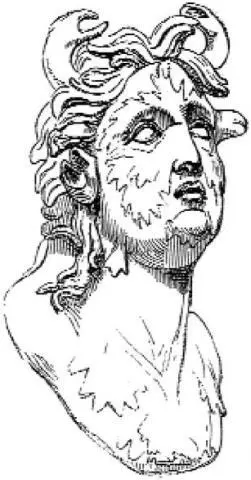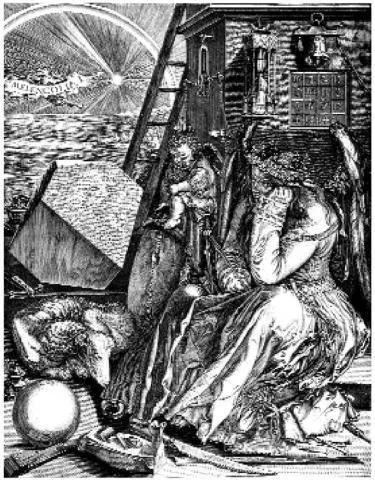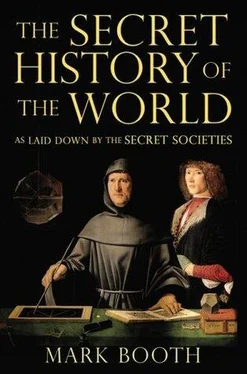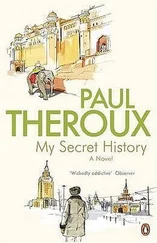Herodotus must have witnessed something very like this if he was allowed see the Black Rite of the Egyptians. At the climax of the initiation ceremony we have been following, the candidate would also have seen something similar — the death of a great god.

In Northern Europe the god who became entangled in the cycles of nature was portrayed as the Green Man. A leaf-clad god, fierce like nature but also a victim of it, Osiris stares down at the congregation from the walls of countless Christian churches.
THE HUMAN CONDITION WAS CHANGING on many different levels. We have reached a pivotal time in the secret history of the world when matter had precipitated out of mind and hardened to such a degree that the human skull was finally formed into a shape very like it is today. But the Third Eye was still much more active than it is today and had not become vestigial. Perceptions of the material world were equally as vivid as perceptions of the spiritual world .
A human being ushered into a throne room might look at another human being sitting in front of him, or at least what appeared to be very like a human being. Although humans no longer had unlimited access to the spirit worlds, the man might then be permitted to look at the king again with his Third Eye, and, if he did, he might see a god sitting there.
The greatest historical record of humanity’s lost ability to exercise this double mode of perception comes in the Hindu sacred text the Bhagavad Gita . A charioteer called Arjuna has been full of doubts on the eve of battle. So Krishna, the leader he is about to drive into the fray, allows Arjuna to see him as he looks to the eye of vision, in his supreme, divine form. Trembling with awe and wonder he sees Krishna’s eyes as the sun and moon, sees that Krishna fills all of heaven and earth with radiance as if with the light of a thousand suns, that he is worshipped by countless other gods and that he contains within himself all the wonders of the cosmos. Afterwards Krishna shrinks into his human form again, and shows his gentle human face to reassure terrified Arjuna.
Osiris might equally have given this experience to someone who had walked into his throne room at Thebes. Jacob Boehme described the world of cut stone, carved wood, of royal robes and flesh and blood as ‘Outworld’. He intended to be a bit disparaging. He knew that the inner world, accessible to the Third Eye, is the real one, and in the midst of the bloody, painful, death-drenched world in which the followers of Osiris now found themselves, this is what they clung on to.
THE MYTH OF OSIRIS, THEREFORE, HAS many layers of meaning, but it is above all a myth about consciousness.
It informs us that we must all die — but in order to be reborn. The key point in this story is that Osiris is reborn not into ordinary life but into a higher state of consciousness. ‘I shall not decay,’ he proclaims in the Book of the Dead , ‘I shall not rot, I shall not putrefy, I shall not turn into worms, I shall have my being, I shall live, I shall live.’ Again we come across a phrasing, an idea of being born again that may seem strangely familiar to Christians. Osiris is here discovering that he has what Christians call ‘eternal life’.
IN THE STORY OF OSIRIS WE HAVE SEEN how the forces of sex, death and thought became ever more tightly entwined in order to create the unique thing that is human consciousness. The wise men and women of antiquity understood how death and sexuality are necessary for thought to arise, and because they understood how these forces had been woven together in a historical process, they also understood how conscious thought could be used to manipulate the sexual and the death forces in order to achieve higher states. Since ancient times these techniques have been among the best kept secrets of the Mystery schools and secret societies.
We will look into these techniques in some detail later, but all this is a difficult area for us because our understanding of sexuality tends to be on a very materialistic level.
For instance, it is very difficult for us today to look at paintings and carvings of the erect phallus adorning the walls of Hindu or Egyptian temples and to imagine how they would have been intended to be ‘read’, because in the modern world spirituality has for the most part been removed from sex.
In the ancient world sperm was understood to be an expression of the cosmic will, the hidden generative power in things, the ordering principle of all life. Each particle of sperm was held to contain a particle of the prima materia out of which everything was made, a particle which could explode with incredible burning heat to form a whole new macrocosm. Adolescents in our era may catch some reverberation of the ancient feeling, when the first stirrings of sexuality bring on feelings of keen, new intensity and an aching desire, felt in the breast, to embrace the whole world.
Desire is always open to corruption, though. What we desire, we possess in our imagination. Desire hardens. When we desire someone we ‘reify’ them to borrow Jean-Paul Sartre’s phrase. We want to bend them to our will, which is the influence of the Spirit of Opposition.
In the mind-before-matter view this diminishing of other people by the way we perceive them can be literally true. The way you look at people affects their internal physiological and chemical constitution.
Modern science has taught us to think of the sexual urge as something impersonal, something that has a will apart from our own, as an expression of the will to survive of the species. For the ancients, too, the sexual urge was an expression of a will beyond the individual. They saw sexuality impelling us towards the great moments of our lives, because they saw how sex controls who we are born to, as well as determining the people we are attracted to.
A man in the ancient world might see a woman he desired and be overcome by a quite frightening, overwhelming desire. He would know that the rest of life would be shaped by her response. He would also know that the roots of his desire lay very, very deep, having their origins long before his present lifetime. He would know that the sexual desire that drove him towards that woman was not merely biological — as in the modern account — but had other dimensions, spiritual and sacred. If the planet of love had been steering them towards this meeting, then so, too, had the other great gods of the sky been preparing this experience for them over many, many millennia and through many incarnations.

Melancholia I by Dürer and opposite The Death Posture by Austin Osman Spare. In the same way that in the secret societies techniques are taught to control sexual forces as a way of achieving higher forms of consciousness, so there are also teachings on channelling the closely intertwined death forces. Osman Spare developed a practice which involved closing off mouth, nostrils, ears and eyes. In India adepts including Bhagavan Shri Ramana and Thakur Haranath have achieved long, death-like trances which have even led to their being prepared for burial, then been reborn into a new, higher form of consciousness.
Today we know that when we look at a distant star we are seeing something that happened a very long time ago, because of the time it has taken for the light from that star to reach the earth. The ancients knew another truth, which is that when they contemplated their own will, they were also looking at something which they had formed long before they were born. The ancients knew that every time they felt themselves merging with another human being in the sexual act, the flight of whole constellations was involved. They knew, too, that how they made love would have an effect on the cosmos for millennia to come.
Читать дальше














